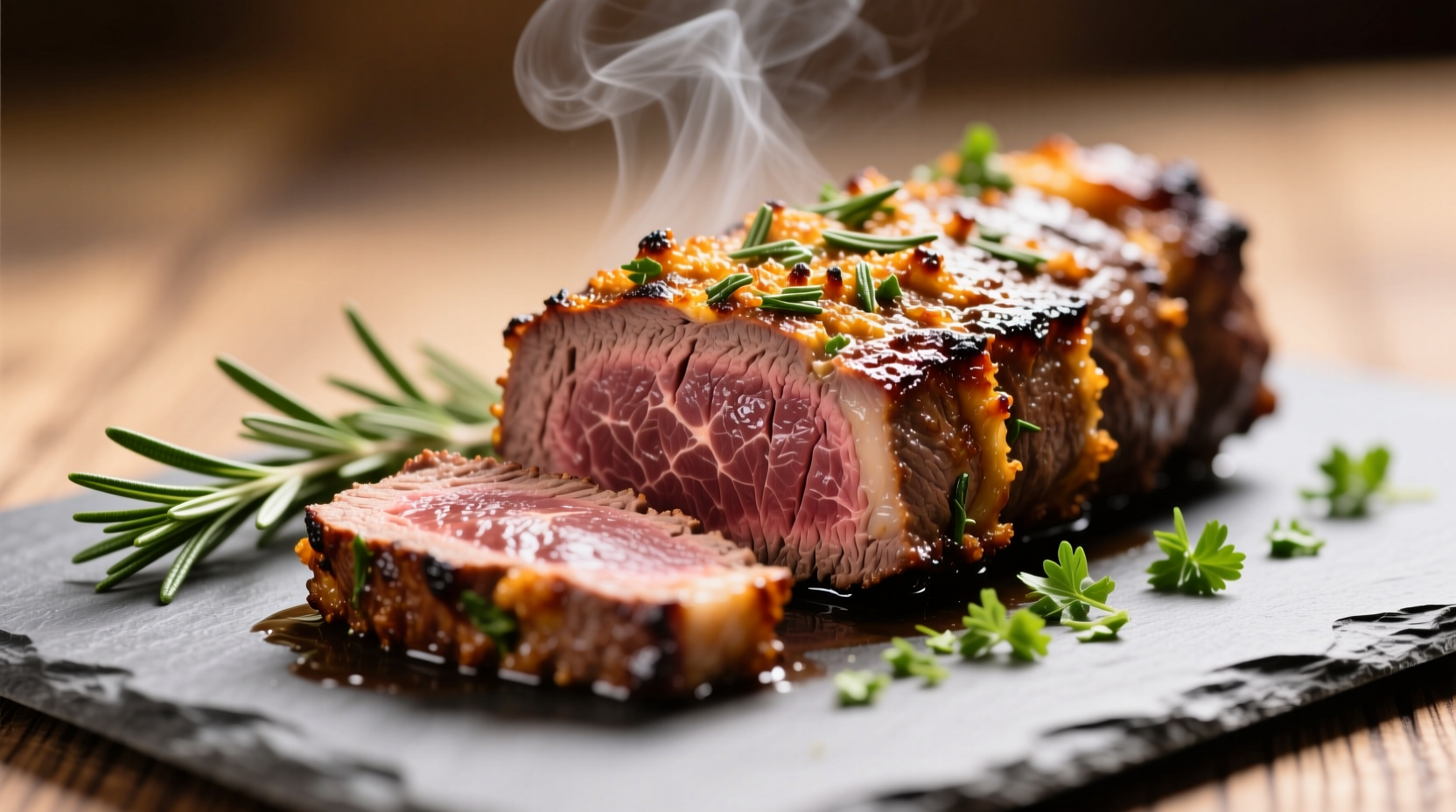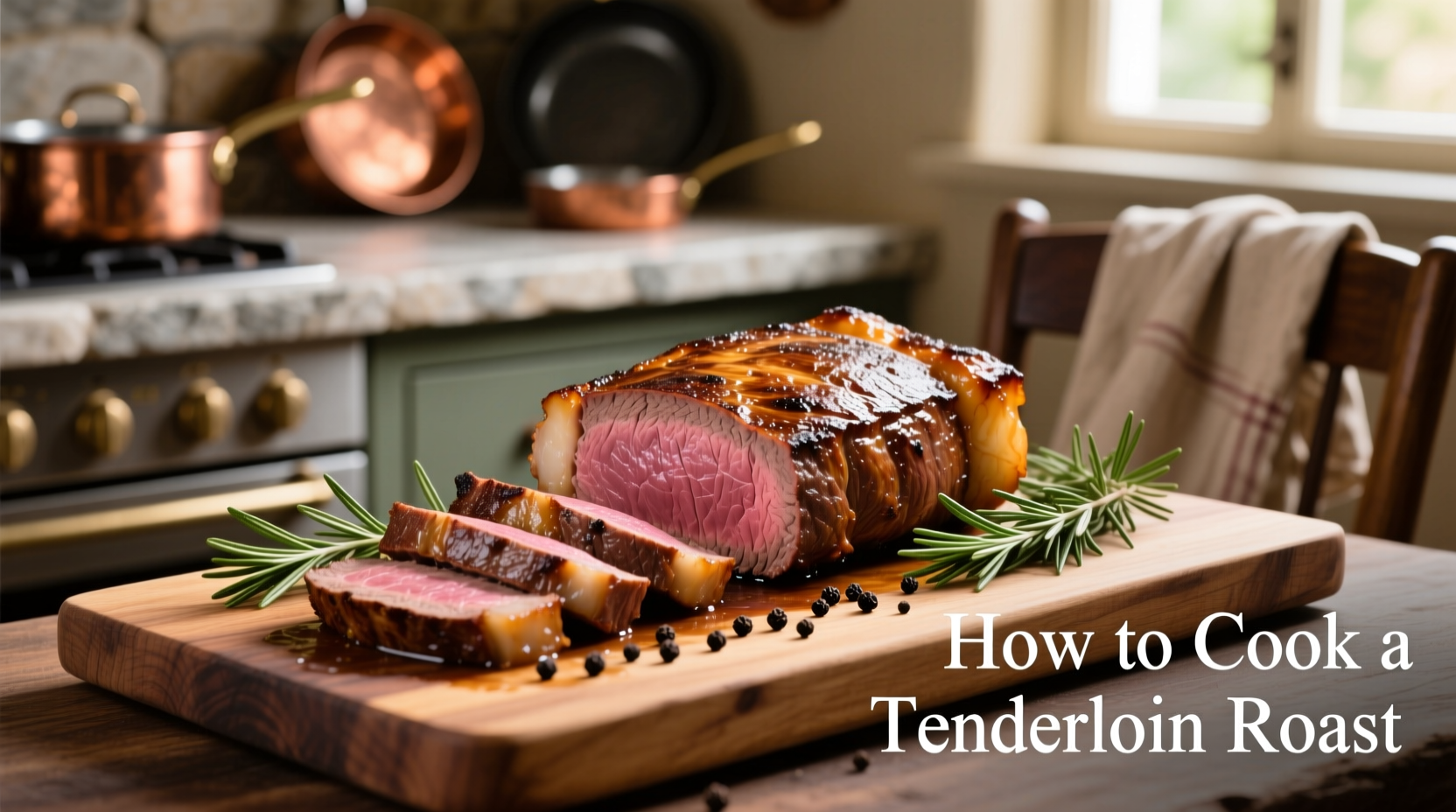Beef tenderloin roast represents one of the most elegant yet accessible centerpiece dishes for special meals. This lean cut from the loin section requires precise handling to maintain its delicate texture while developing rich flavor. Follow this scientifically backed method to transform your tenderloin into a restaurant-quality masterpiece that impresses without overwhelming your cooking workflow.
Why Tenderloin Deserves Special Attention
Unlike tougher cuts that benefit from slow cooking, tenderloin's delicate muscle fibers demand careful temperature management. The USDA Food Safety and Inspection Service confirms that beef tenderloin must reach a minimum internal temperature of 145°F (63°C) with a three-minute rest period for safe consumption. Undercooked tenderloin risks foodborne illness, while overcooking beyond 155°F transforms its prized tenderness into dry, chewy disappointment.
| Doneness Level | Internal Temperature | Visual Characteristics | Resting Time |
|---|---|---|---|
| Rare | 120-125°F (49-52°C) | Bright red center, cool | 10-12 minutes |
| Medium Rare | 130-135°F (54-57°C) | Warm red center (ideal) | 12-15 minutes |
| Medium | 140-145°F (60-63°C) | Pink center | 15 minutes |
Source: USDA Food Safety and Inspection Service temperature guidelines for beef
Preparation Essentials: Setting Up for Success
Begin with a properly trimmed 4-5 pound center-cut tenderloin, removing the silver skin membrane that won't tenderize during cooking. Professional chefs universally recommend bringing the meat to room temperature for 1-2 hours before cooking - this critical step ensures even heat distribution. Season generously with coarse salt and freshly ground pepper at least 45 minutes prior to cooking, allowing the salt to penetrate the surface for enhanced flavor development.
For optimal flavor pairing, consider these seasoning combinations based on culinary science principles:
- Classic preparation: Rosemary, thyme, and garlic paste
- Modern twist: Dijon mustard base with cracked black pepper
- Elegant variation: Mushroom duxelles and bacon wrapping

Mastering the Cooking Process
Two reliable methods deliver exceptional results depending on your equipment and timeline:
Sear-Then-Roast Method (45-60 minutes total)
- Preheat oven to 425°F (220°C)
- Sear all sides in smoking hot cast iron skillet (2-3 minutes per side)
- Transfer to oven and roast until reaching target temperature
- Use an instant-read thermometer inserted into thickest part
Reverse Sear Method (2-3 hours total)
- Preheat oven to 275°F (135°C)
- Place tenderloin on wire rack in roasting pan
- Cook until internal temperature reaches 115°F (46°C)
- Rest 15 minutes, then sear in hot skillet for crust development
The reverse sear method provides superior edge-to-edge doneness, particularly valuable for thicker cuts. America's Test Kitchen research confirms this technique reduces the gray band of overcooked meat by 60% compared to traditional roasting.
Critical Resting and Carving Techniques
Never skip the resting phase - this allows juices to redistribute throughout the meat. Tent loosely with foil and rest for 12-15 minutes (1 minute per 100g of meat). Cutting too soon releases precious juices onto your cutting board rather than staying in the meat.
For professional presentation:
- Use a long, sharp carving knife with minimal sawing motion
- Cut against the grain in 1/2-inch thick slices
- Angle your knife slightly for wider presentation slices
- Arrange slices slightly overlapping on warmed platter
Troubleshooting Common Challenges
Problem: Uneven cooking with overdone ends
Solution: Tuck the thin tail under and secure with butcher's twine to create uniform thickness
Problem: Lack of crust development
Solution: Pat meat completely dry before searing and ensure your pan is properly preheated
Problem: Dry, tough texture
Solution: You've likely exceeded 145°F internal temperature - invest in a reliable instant-read thermometer
Perfect Pairings for Your Tenderloin
Complement rather than compete with your star ingredient. The American Institute of Wine & Food recommends these classic combinations:
- Red wine: Pinot Noir or Merlot with moderate tannins
- Sauces: Red wine reduction, béarnaise, or simple pan jus
- Sides: Roasted root vegetables, garlic mashed potatoes, or seasonal asparagus
Remember that tenderloin's delicate flavor shines brightest when not overwhelmed by heavy sauces or competing strong flavors. When serving, place the roast at the center of your table - its elegant presentation needs little enhancement beyond proper slicing technique.











 浙公网安备
33010002000092号
浙公网安备
33010002000092号 浙B2-20120091-4
浙B2-20120091-4